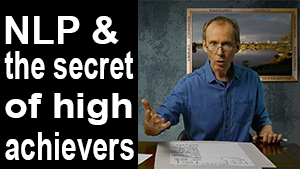
How to heal an eating disorder - how to stop binging - and get long term results. Phone Abby Eagle on 07 5562 5718 or send an email to book a free 20 minute telephone or Skype consultation. Abby Eagles unique NLP and Hypnotherapy provides a cost effective solution to binge eating, bulimia and anorexia. Gold Coast Australia. Neuro Linguistic Programming sessions - online coaching available on Skype.
How to Deal With Bulimia and Get Long Term Results Using NLP and Hypnotherapy
By Abby Eagle (2017)
Click the Image to Watch on YouTube
Bulimia is an eating disorder that affects more women than men. The person binge eats and then vomits the food. It generally starts in the teenage years and may be associated with anorexia. It is a serious problem because vomiting is extremely hard on the body. Some women may spend ten to twenty years trying to solve the problem but they don’t need to because in most cases the resolution is quite straight forward.
At this point I need to make a note that this article is for people who have some knowledge and experience with NLP and Hypnotherapy.
The most important thing about a NLP coaching session is to structure it carefully. What I learned from Richard Bandler many years ago was to gather just enough information to map out the structure of how the client does the process of whatever it is that they do – and then identify and make changes at key points to maximise the change with the least amount of time and work.
This is important for a number of reasons because in many cases the client may have spent years trying various treatments and when they come to the NLP Hypnotherapist they do so because they either heard about someone getting a miraculous result or they are now at their wits end and they are looking for a one session cure.
So over the years what I learned to do was to structure a session in which I could maximise the results in just 2 hours.
How to Stop Binge Eating
Bulimia is really just binge eating followed by purging. And I think this is what is important for people to understand – that bulimia and a lot of problems only seem insurmountable because that is how you think about it.
So dealing with bulimia is pretty straight forwards once you know how. Now I know that I am drawing upon 30 years of experience and that I have incorporated dozens of procedures and understandings into a session but I will try and give you the basic outline.
So the session usually starts on the phone when the client makes the initial contact. I use this time to gather information about the problem and educate the client about my approach using NLP and hypnotherapy. I don’t like to sell a client – what I do is to talk to them until they ask me how much it will cost. At this point I know that I have good rapport. From their first email contact and conversation on the phone and in the session I am listening for values, beliefs, attitudes, meta programs, personality type, negative emotions, frustrations and desired outcomes.
Even though I am not a nutritionist I ask some basic questions about diet. The reason being is that some types of diets cause nutrient depletion which the client may misinterpret as food cravings rather than hunger. Low fat diets tend to lead towards high carbohydrate and nutrient depletion. Also there is no switch in the brain for carbohydrates like there is for fats and proteins – so carbs tend to suggest that you want to take another bite. Most but not all of the binge eaters and bulimics that I have worked with have been on low fat diets.
So once the client arrives for their session and they have completed the registration form and we have spent a few minutes establishing rapport I usually say something to the effect – we have had a conversation on the phone so tell me once again, what is the problem if any and what do you want from these sessions?
The client starts talking and I listen. Usually they start telling me a story thinking that I need a lot of information but once I get what I am listening for then I interrupt and ask another question or I might draw a diagram on a piece of paper to illustrate a concept. The first time that I interrupt I tell them that I do it in the service of them. This means they then get accustomed to me interrupting. One reason I interrupt is that I don’t like wasting time and I want to get the outcome as quickly as possible – which makes the client happy. And another reason is that I get bored listening to stories and I can get distracted away from finding a solution to their problem.
So in the case of bulimia you need to learn when it started – how old they were – what happened. As they tell the story I listen for negative emotions. Typically there will be a number of negative emotions – could be fear, anxiety, abandonment, shame – sometimes guilt but typically you only need to deal with one or two.
I take notes on an A4 pad. The first page has the NLP well formed outcome questions and some key procedures printed in a column down the right hand side of the page. This helps keep me on track. When I identify a problem I write P/S in front of it. When I get a desired outcome I write D/O in front of it. This makes it easy for me to organise the session. I also make notes of the procedures that I plan to use.
Once I get enough information about the problem situation I then ask the client what they want – that is their desired outcome – what they will look like, sound like and feel like as the new them. This is when I usually draw the present state to desired outcome model on a piece of paper. So I have one pad for me and another for them. Sometimes I will write on their notepad and other times I will ask them to write something. If it is just information I will write it and then tell them that I will email them a link to the information after the session. If it is important that the client write down their thoughts then they do so.
So once I have enough information about the present state and have a reasonably well formed outcome then I clear the most important negative emotion using the NLP Timeline procedure followed by a strong future pace. The future pace is where you take the learnings – the resources – into the future and contextualise it to their desired outcome. There is a knack in identifying the most important negative emotion which I think comes from experience. When you clear the most important negative emotion then transformation may occur but only when you incorporate that into a structured session.
I think I should make a note here that from the moment that I talk with the client on the phone I am working to help them achieve their desired outcomes. So if I can get the outcomes conversationally I will do so. I also know that I am talking to their unconscious mind as well as their conscious mind. This means that I also assume that the client is in trance so I don’t really need to do fancy hypnotic inductions.
So the next step is to elicit ideomotor responses using finger signals. Once the client gives a clear yes and no signal – I then utilise the trance state and ask some specific questions of the unconscious mind that presuppose a banishing of the problem.
Next step is to show the client how to use a hypnosis pendulum. This procedure in itself can be quite powerful in that the client is learning how to work with their unconscious mind and build in the ability to say yes and no.
Then I get to work on the binging strategy. All you need is to interrupt the strategy so that it no longer runs again. So I ask the client to think of the last time that they binged. I make a note of when and where that was. Then I ask, “How did you know that it was time to binge, was it something that you saw, an image you made in your mind or something that you said to yourself?” If they start talking about an event then I repeat the question until they either answer, an image or something they said. I then use a simple procedure to turn down that thought and insert a new positive thought to redirectionalise the brain towards their desired outcome. This procedure may be used on a number of triggers.
Next step is to induce a trance state. I keep it very simple and use a double arm levitation procedure. Then I read my script. The reason I read the script is because the questions and suggestions need to be very specific and cover all possibilities.
I then bring the client out of trance and that is basically it. I then ask the client about their most important learnings from the session and what tasks they might give themselves over the next few days. This is when I may also check the client’s reassurance strategy – and that is it.
The first session takes 2 hours and in many cases brings about a cessation of the binging or at the least a marked reduction. Subsequent sessions are used to reinforce and sustain the desired outcomes.
 Read what Melisa has to say about using NLP to recover from an eating disorder:
Read what Melisa has to say about using NLP to recover from an eating disorder:
"I suffered with manic depression and an eating disorder for 10 years. I saw countless psychiatrists and psychologist but to no avail. I had 4 NLP sessions with Abby Eagle and now my eating disorder and manic depression have gone. I got a real big result. I enjoy food now. My relationship with myself has improved. I don't look at people so critically anymore. I feel I have gone to a higher realisation of myself." Melisa Huyghebaert Nerang, Gold Coast, Qld.
 Read what Natalie says about healing from Anorexia
Read what Natalie says about healing from Anorexia
"My experience of NLP with Abby Eagle in dealing with my anorexia was very gentle. I did not have to experience emotional trauma to gain a different perspective on my life. In 4 sessions I was able to achieve significant changes in my life and relationships and NLP has played a part in assisting me to do this. I feel confident that my healing's are permanent." Natalie Griffith Worongary, Gold Coast, Qld.
 Read what Jenni says about healing compulsive eating with NLP
Read what Jenni says about healing compulsive eating with NLP
"I battled with alcohol abuse, depression, low self esteem and compulsive eating for 20 years. I spent $1500 on a Gastric Bandaging operation but became regretful and angry when I realised the underlying issues had not been addressed. When life became intolerable I finally visited Abby Eagle for a series of 5 NLP consultations. Immediately I noticed a spasmodic lessening and softening of the problem. After each NLP consultation there was a sense of knowing I was OK, feeling unstuck from the past, and looking forward with hope and excitement to the future. I began to open up emotionally to other people and to myself. I was able to allow whatever emotion I was experiencing to be there without the old urgent impulse to suppress and deny it. And then came an understanding, a trusting that the emotion would pass. But more importantly a realisation that all emotions are a natural expression of me.
The changes are so subtle - an unforced new way of being just easily and gently permeated my life. I feel the results are more than permanent - the 'results' are due to the cleansing of the old stuff. Abby's approach is unique because as well as being gentle and non invasive, it gets profound results." Jenni Walker Nerang, Gold Coast, Qld.
Thank you for reading the article. Please leave your comments below - and share the article on social media. If you want some help with an eating disorder then feel free to contact myself – Abby Eagle using the contact form - top right of this page. And feel free to join us on Facebook at the NLP Hypnotherapy Group.
Share With Friends
| DISCUSSION GROUPS | |
|---|---|
 |
|
| NLP Future Selfing | |
| NLP, Hypnotherapy & Meditation | |
| NLP Peace Mapping | |
| Facebook Discussion Group | |
| The secret of high achievers |
|---|
 |
| How to build a powerful team |
 |
| Learn the NLP Meta Model |
 |
| How I stopped drinking alcohol. |
 |
| How to coach yourself using NLP. |
 |




